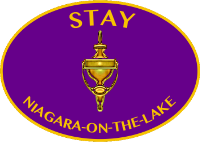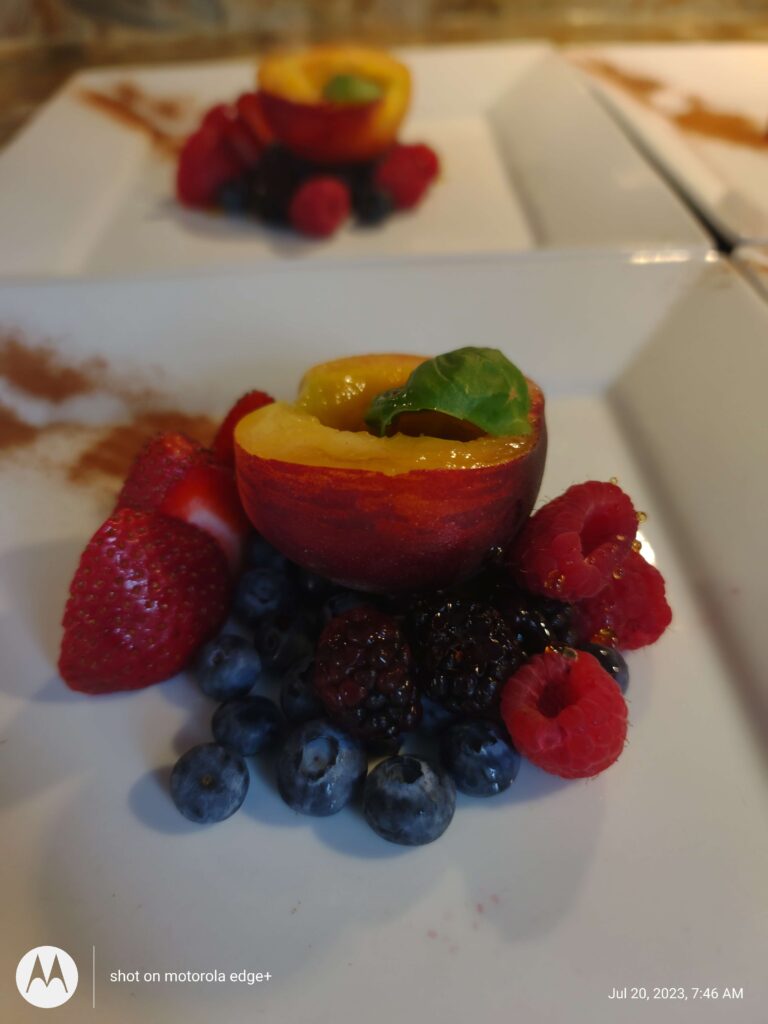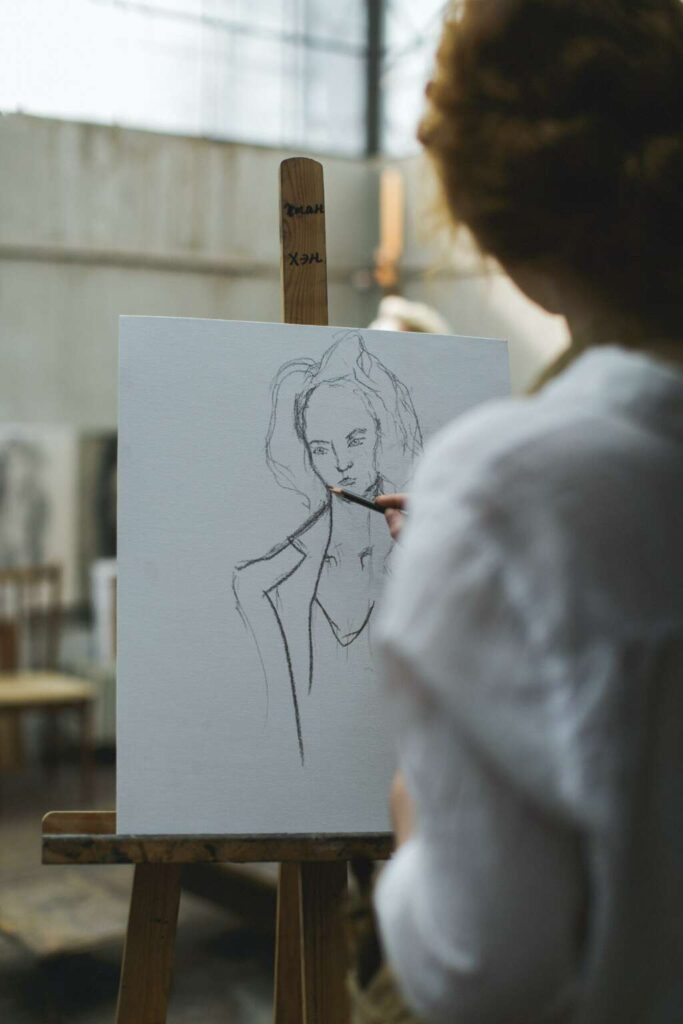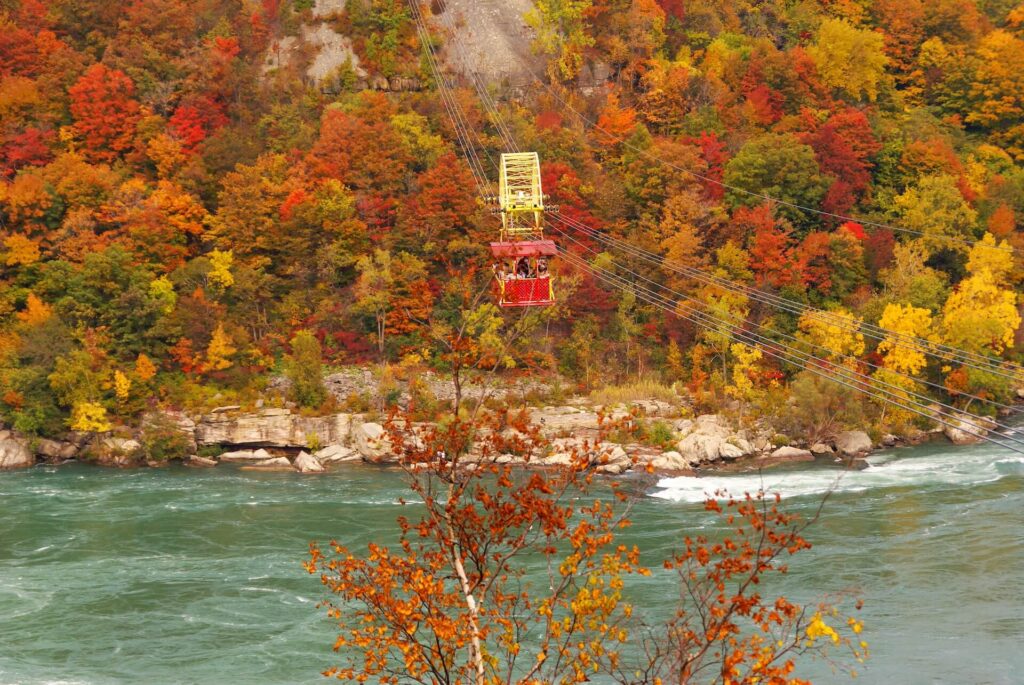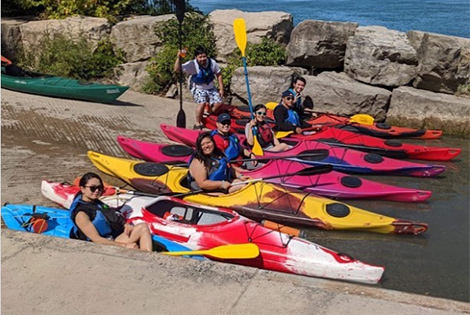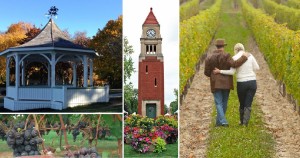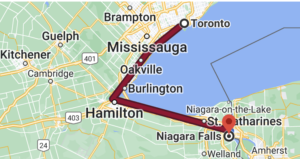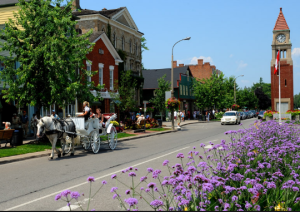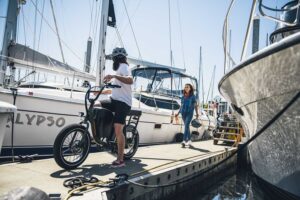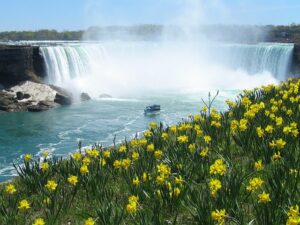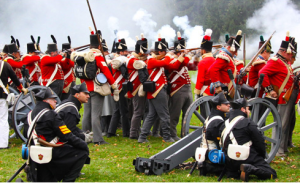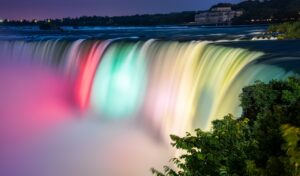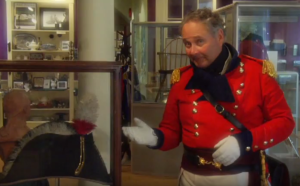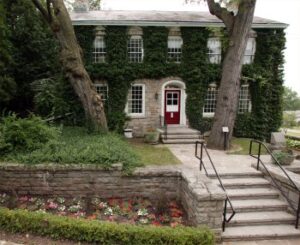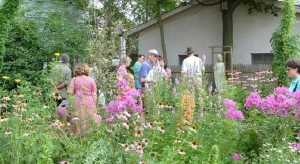
Hello Summertime! We’re now into Cancer season, a time when we want to spend quality time with those we cherish most and establish a healthy balance between work and play. And what better place to create summertime memories than in Niagara-on-the-Lake where a bonanza of family festivals and activities abound.
Festivals are always a sure-fired hit with everyone in the family, and Niagara-on-the-Lake claims the prize when it comes to making up reasons to celebrate.
HONOURING OUR CANADIAN HERITAGE
What better reason for celebration than our Canadian heritage?
Niagara-on-the-Lake is home to Fort George, which served as the headquarters for the Centre Division of the British Army during the War of 1812. It’s also at the centre of our Canada Day celebrations.

On July 1, Fort George is open to all who care to visit the grounds at no cost, providing a perfect opportunity for all ages to learn a little more about Canadian history.
Canada Day celebrations begin with an annual BBQ lunch in Simcoe Park, which includes children’s entertainment, antique cars and live music. At 3 p.m. the annual Cake Parade led by the 41st Regiment Fife and Drum Corps heads down Queen Street to Simcoe Park, where a gigantic cake from Willow Cakes and Pastries is served to the public, free of charge, of course.
Cold drinks and treats are available inside Fort George from 2 to 4 p.m., followed by food services at 4 p.m. and evening entertainment at 6:30 p.m. It all ends with a spectacular fireworks display at 10 p.m.

Meanwhile, the juried Artistry by the Lake show displaying the creations of more than 80 artists and artisans takes over the scenic Queen’s Royal Park on the banks of Lake Ontario from June 29 through July 1.
For history buffs, Fort George celebrations continue with more events. Jane Austen fans can celebrate the 210th anniversary of the author’s novel, Mansfield Park, at a Regency evening at Navy Hall on August 1. Later, on August 17/18, fife and drum corps and infantry units converge on Fort George to showcase the military music and drills of the early 19th century. Napoleon’s army descends on Fort George on September 14/15 for a weekend of muskets and majesty. And, on October 6, why not join in the festivities at Brock’s Birthday Bash?
LET’S CELEBRATE SHAW
Niagara-on-the-Lake is probably best known for its annual Shaw Festival from April to December. This long-standing tradition – 62 years and counting – draws audiences from around the world.
Live stage performances take place twice a day, Tuesday through Sunday, on three stages, with additional productions happening in the Spiegeltent next to the Festival Theatre. Regular ticket prices start at $40 for most performances, however, there are many ways to save with senior discounts, multi-play packages, special pricing for people under 35 and the under-18 crowd, as well as daily deals.
The Shaw also offers behind-the-scene opportunities to tour the facilities and a chance to hobnob and engage with Shaw professionals, writers and scholars. So, if there is a budding actor, costume or set designer, or playwright in the family, this is something to add to your must-do list.

A MUSICAL EXTRAVANGANZA
Now in its 24th season, the Music Niagara Festival promises an unforgettable 2024 season featuring international professionals who span the musical spectrum – chamber music, choral, vocal, contemporary, country, folk and jazz.
In addition, on summer weekends during the festival, the Music Niagara Performance Academy provides an innovative mentorship program of specialized performance training for gifted young musicians. The festival’s young Virtuosos Series presents some of Canada’s finest emerging talents.
Behind the scenes, up-and-coming talented violinists might consider a Masterclass with Solomiya Ivakhiv on July 21 when she will share her musical knowledge and expertise. Or why not delve into a Masterclass in Melody with the Kiri Quartet on August 11?
FRUITY JUBILATIONS
If you missed the annual Strawberry Festival on June 22, not to worry. There are many more fruits in the surrounding orchards of Niagara-on-the-Lake to worthy of celebration.

It’s all about the cherry on July 6 when fruit lovers gather to taste the freshest, crispest, most succulent cherries in the region at the annual St. Mark’s Cherry Festival in Niagara-on-the-Lake. Go ahead and indulge in home-baked cherry pies and other delicious treats on offer, and do take time to view the Haute Emporium Catalogue of wonderful items for sale onsite. It’s all for a good cause.
On August 10, the majestic peach takes center stage at the annual Peach Festival. This peach of a celebration turns Queen Street in Old Town into a pedestrians-only mall lined with merchant and food vendors and live music and entertainment that’s sure to have crowds dancing in the street. After showing off your best moves, stop by the ‘Sips of Summer’ peach bar to see what tasty beverages are on tap this year.
FAMILY-PERFECT ACCOMMODATIONS
Need someplace to accommodate your family in comfort? Look no further than STAY Niagara-on-the-Lake.
For some families, self-catering options are preferred. For you, STAY Niagara-on-the-Lake offers a variety of cottages, villas and apartments perfectly suited to your needs. On the other hand, having someone else prepare breakfast for your family may resonate, in which case a bed and breakfast or charming inn is the better choice. There’s something for everyone.
A QUICK PEEK AT WHAT’S IN STORE
Can’t make one of the festivals? No problem. Something is always happening in Niagara-on-the-Lake. Here is a quick summary of what’s scheduled for the coming months:
June 29, 30 & July 1: Artistry by the Lake
June 30: Sip and Paint Night at Peller Estates Winery
July 6: St. Mark’s Cherry Festival
July 4: Angela Seeger Summer Concert Series at Corks Wine Bar & Eatery
July 14: A Midsummer Night’s Dream at Jackson-Triggs Estate Winery
July 28: Sip and Paint Night at Peller Estates Winery
August 5: The Past is Present Heritage Festival
August 9: July 4: Angela Seeger Summer Concert Series at Corks Wine Bar & Eatery
August 10: Peach Festival
August 11: Shades of Rose Dinner
August 3 & 4: Juried original art show and sale at the Niagara Pumphouse Arts Centre
August 18 to 25: 2024 World Rowing Championships in St. Catharines
August 25 & September 29: Sip and Paint Night at Peller Estates Winery
September 13: Heritage Garden Party
September 14: Niagara Polo at The Commons
October 4: Shaw Guild Autumn Soirée at Château des Charmes
October 5: Mom Market Niagara at Jackson-Triggs Estate Winery
October 5 & 6: NOTL Beer/Harvest Festival
December 6: Candlelight Stroll
December 6 & 7: Rotary Club House Tour
December 14: Christmas Parade
HELPFUL TIPS
Lost & Found: Did you lose something while you were in Niagara-on-the-Lake? Contact the lost and found centre at the NOTL Chamber of Commerce located at 26 Queen Street in the lower level of the building. Or call 1-905-468-1950 or email tourism@niagaraonthelake.com for more information.
Drive Safely: As part of Niagara Region’s Vision Zero program, automated speed enforcement cameras have been installed in school zones. Please pay attention to the speed limits posted throughout Niagara-on-the-Lake as more cameras are planned.
Metered Parking: General information on metered parking in Niagara-on-the-Lake is found here. Remember, you don’t pay after 8 p.m. Your STAY Niagara-on-the-Lake hosts feature complimentary on-site parking for guests and are happy to advise you on where to park for free in and around Old Town.
Accessible Parking: Several accessible parking spaces are located throughout the Town of Niagara-on-the-Lake, both on the street and in municipal parking lots. All vehicles parking in the accessible zone must display an original and current accessible permit. Any vehicle found parked in an accessible zone without the valid accessible permit will be ticketed. The Town of Niagara-on-the-Lake has approved the use of accessible parking permits in the following areas only:
- Designated accessible zones/spaces; and
- At any meter free of charge, including municipal lots governed by pay-and-display parking meters. In these locations, a pay-and-display permit is not required if the vehicle is displaying a valid accessible permit.





